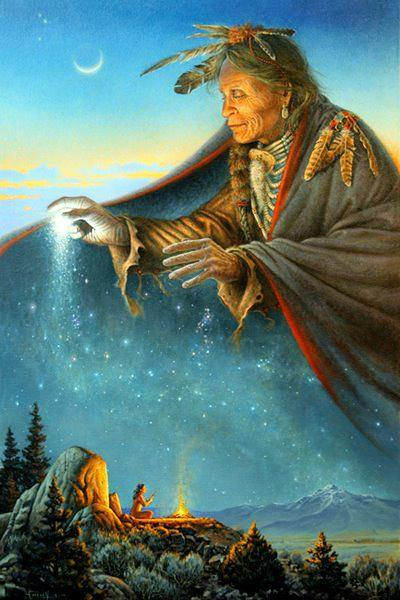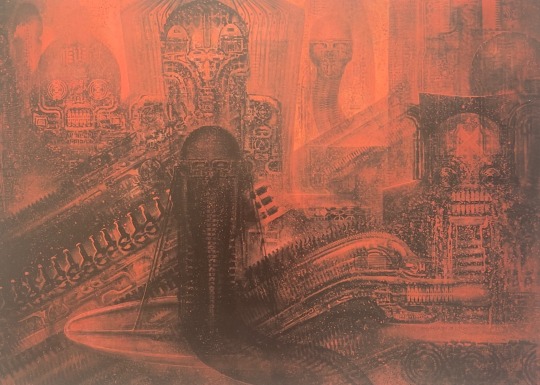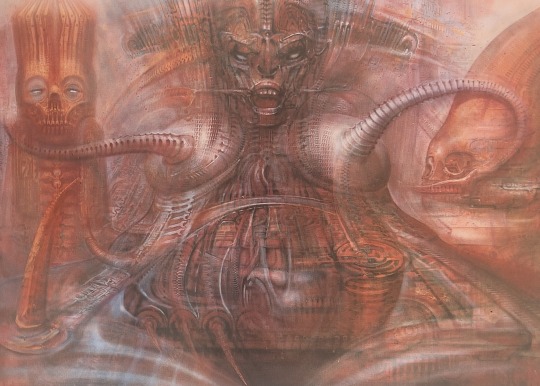#totemism
Text
APOLLO LYKAIOS, the Blue-Eyed Beast

There was a ‘dark’ underground and background to the ‘god of light.’ This claim plainly contradicts the received opinion about Apollo, the Greek god who was pushed farthest of all into the realm of the ‘bright’ and the ‘spiritual.’ It removes him from the unfruitful antinomy of the pair of opposites, ‘Apollonian’ and ‘Dionysian.’ It also confirms the ambivalence which Thomas Mann seems to feel in his urge to identify origins: ‘Who can say where the stories originated, above or below?’ (Christa Wolf)

"And you, Apollo, lord of the Wolf, be a wolf to the enemy force and give them groan for groan!" (Aeschylus)

The epithet Lykaios/Lyceus shows Apollo as protector and master of wolves (λύκοι). For example, the god Apollo Lykaios was invoked to ward off enemies. And as an averter of evil, he protects herds, flocks and the young. We can see some parallels to the divine/protective role of wolves in other cultures, for example in Japan. (Ralph Haeussler)

#legend of zelda#zelda#twilight princess#wolf link#hero's shade#golden wolf#twilight#oot link#apollo#greek gods#greek mythology#lykaios#wolf#christa wolf#cassandra#gods#totemism#wolf gods#thomas mann
7 notes
·
View notes
Text
Varieties of Theism
Agnostic Theism
Whereas atheism and theism deal with belief, agnosticism deals with knowledge. The Greek roots of the term combine a (without) and gnosis (knowledge). Hence, agnosticism literally means “without knowledge.” In the context where it is normally used, the term means: without knowledge of the existence of gods. Since it is possible for a person to believe in one or more gods without claiming to know for sure that any gods exist, it's possible to be an agnostic theist.
Monotheism
The term monotheism comes from the Greek monos, (one) and theos (god). Thus, monotheism is the belief in the existence of a single god. Monotheism is typically contrasted with polytheism (see below), which is a belief in many gods, and with atheism, which is an absence of any belief in any gods.
Polytheism
Polytheism is the belief in the existence of multiple gods. The prefix ''poly'' means many, so polytheists believe that there are multiple divine forces in existence. The Greek and Roman pantheons are excellent examples of these, as they consist of many gods that govern different aspects of nature and essences of humanity. Some argue that Christianity is a polytheistic religion because of the worship of the Trinity. However, the Father, Son, and Holy Spirit are all aspects of a single God, making it a monotheistic religion.
Deism
Deism is actually a form of monotheism, but it remains distinct enough in character and development to justify discussing separately. In addition to adopting the beliefs of general monotheism, deists also adopt the belief that the single existing god is personal in nature and transcendent from the created universe. However, they reject the belief, common among monotheists in the West, that this god is immanent—presently active in the created universe.
Henotheism and Monolatry
Henotheism is based upon the Greek roots heis or henos, (one), and theos (god). But the term is not a synonym for monotheism, despite the fact that it has the same etymological meaning.
Another word expressing the same idea is monolatry, which is based on the Greek roots monos (one), and latreia (service or religious worship). The term appears to have been first used by Julius Wellhausen to described a type of polytheism in which just a single god is worshiped but where other gods are accepted as existing elsewhere. Many tribal religions fall into this category.
Pantheism
The word pantheism is built from the Greek roots pan (all) and theos (god); thus, pantheism is either a belief that the universe is God and worthy of worship, or that God is the sum total of all there is and that the combined substances, forces, and natural laws that we see around us are therefore manifestations of God. The early Egyptian and Hindu religions are regarded as pantheistic, and Taoism is also sometimes considered a pantheistic belief system.
Panentheism
The word panentheism is Greek for “all-in-God,” pan-en-theos. A panentheistic belief system posits the existence of a god that interpenetrates every part of nature but which is nevertheless fully distinct from nature. This god is, therefore, part of nature, but at the same time still retains an independent identity.
Impersonal Idealism
In the philosophy of Impersonal Idealism, universal ideals are identified as god. There are elements of impersonal idealism, for example, in the Christian belief that "God is love," or the humanist view that "God is knowledge."
Autotheism
The term ''autotheism'' is composed of two parts: the prefix, ''auto,'' and the root/suffix combination, ''theism.'' ''Auto'' means ''self, one's own, by oneself.'' So, autotheism is the belief that one is a god themself. It has also been described as someone who mistakes one's inner voices as God's voice within them.
Kathenotheism
The belief that there are many gods, but only one deity at a time should be worshipped, each being supreme in turn.
Ditheism (or Duotheism)
The belief in two equally powerful gods, often, but not always, with complementary properties and in constant opposition, such as God and Goddess in Wicca, or Good and Evil in Zoroastrianism and Manichaeism. The early mystical religion Gnosticism is another example of a ditheistic belief of sorts, due to their claim that the thing worshipped as God in this world is actually an evil impostor, but that a true benevolent deity worthy of being called "God" exists beyond this world.
Misotheism
The belief that gods exist, but that they are actually evil. The English word was coined by Thomas de Quincey in 1846. Strictly speaking, the term connotes an attitude of hatred towards the god or gods, rather than making a statement about their nature.
Dystheism
The belief that gods exist, but that they are not wholly good, or possibly even evil (as opposed to eutheism, the belief that God exists and is wholly good). Trickster gods found in polytheistic belief systems often have a dystheistic nature, and there are various examples of arguable dystheism in the Bible.
Animism
Animism is the idea that all things—animate and inanimate—possess a spirit or an essence. First coined in 1871, animism is a key feature in many ancient religions, especially of indigenous tribal cultures. Animism is a foundational element in the development of ancient human spirituality, and it can be identified in different forms throughout major modern world religions.
Totemism
Totemism is a system of belief in which man is believed to have kinship with a totem or a mystical relationship is said to exist between a group or an individual and a totem. A totem is an object, such as an animal or plant that serves as the emblem or symbol of a kinship group or a person. The term totemism has been used to characterize a cluster of traits in the religion and in the social organization of many primitive peoples.
#theism#paganism#greek polytheism#varieties of theism#animism#totemism#dystheism#misotheism#ditheism#duotheism#kathenotheism#autotheism#panentheism#pantheism#henotheism#deism#monotheism
192 notes
·
View notes
Text

3 notes
·
View notes
Video
Embark on a journey to uncover the secrets of Totemism with Monotheist in our latest video. Explore the cultural importance of totems and demystify the intriguing world of Totemism in simple terms. Whether you're new to the concept or looking for a clearer understanding, our video is here to make it easy for you. Subscribe to Monotheist for more videos simplifying spirituality and culture. Let's explore and learn together! 🌐✨ #Totemism #Monotheist #SimpleExplainer #AncientBeliefs #TotemismExplained #DiscoverMonotheist #trending #polytheism #monotheism #religions #religion #Explore
#sociology#society#tribal#totem#totemism#religion#society religion#sociology of religion#Mysteries of totemism#monotheism#monotheist#hank green#trending#viral#Totems Culture#religions#religions of the world#religion comparison#God#what is totem#crash course#the sun#sea god#Sun god#What is Totemism?#Mysteries of Totemism#Totemism Explained#What is Totemism? | Mysteries of Totemism | Totemism Explained
0 notes
Text
"...historical fact that the demolition of the problem of totemism began in the United States...and that it was tenaciously prosecuted there. To be convinced that this was not a merely local development, we need only consider rapidly the development of ideas in England. / In 1914, one of the most famous theoretical writers on totemism, W. H. R. Rivers, defined it by the coalescence of three elements: (1) a social element, viz., the connection of an animal or vegetable species, or an inanimate object, or perhaps a class of inanimate objects, with a group defined by the society, typically with an exogamous group or clan; (2) a psychological element, viz., a belief in a relation of kinship between members of the group and the animal, plant, or thing, often expressed in the idea that the human group is descended from it; (3) a ritual element, viz., a respect for the animal, plant, or thing, typically manifested in a prohibition on eating the animal or plant, or on using the object, except on certain conditions."
📚 Claude Levi-Strauss - Totemism, 1963.
0 notes
Text


Transparent Plant Totem Prosthesis by YVMIN, created for Xiao Yang (2021)
#YVMIN#Xiao Yang#art#futurism#prosthetics#prosthetic leg#transparent#accessories#fashion#plant totem#prosthesis#2021
4K notes
·
View notes
Text
In the following study of the belief of an Evil Eye among the Gaelic-speaking peoples of Scotland at the present day, an attempt is made neither to disguise nor to improve upon what those in contact with believers have learned from their mouths. The writer is a believer in the Evil Eye only in so far as it may be a term for the natural selfishness of the human being, as a “tender heart” is a recognized way of speaking of a nature apt to sympathy. Selfishness, natural to all of us, is apt to find expression in our habits, however much we may disguise it by religious or charitable profession. Were it a part of our nature to have for our neighbor the same affection that we have for ourselves, no such superstition as that of the Evil Eye could have arisen. But we are not made that way, and so reformers, in endeavoring to cure this sin, as they consider it, have preached and tried to practice such ordinances as “Thou shalt not covet,” and “Thou shalt love thy neighbor as thyself.” Truly hard sayings, and in nine hundred and ninety-nine cases out of a thousand with difficulty getting beyond the status of a pious opinion.
Not that that teaching has been without effect; and we may hope that with the extension of communications and the progress gradually being made to that condition of things where
“Man to man the world o’er Shall brithers be for a’ that,”
the bad e’e may some day in these isles be merely a study for folklorists as Totemism is, and as difficult to find as an auk’s egg.
[Pg 3]
Right or wrong, the theory here advanced accounts, satisfactorily, as far as the writer can judge, for the present-day widespread belief in Scotland of the power for evil of the glance of the human eye.
See Source: https://rhianna.tumblr.com/post/710817092961746944/evil-eye-in-the-western-highlands-by-robert-craig
0 notes
Text
Me vengo en sus calzoncitos
Nasty beauty gets cum shot on her face swallowing all the load
I think my friend has the best natural tits and cute little ass
Giant cock fucking miniature pussy
Milf threesome creampie eating first time Car Jacking Suspect gets
Teen Doll Riding Her Shemale Partner On Webcam
MILF Giving Handjob to Sons Friend
Public sex verified creampie and amateur teen striptease masturbate
Hardest deepthroat threesome with horny milf
Hot babe oiled and massaged her busty asian girlfriend
#yolkiness#intralobar#hesitancy#Oculinidae#leerfish#appanages#antiritual#gnarliness#DSS#twice-captured#cradled#unstreng#brogger#self-disclosing#dogbanes#swail#totemism#prancing#surfs#copper-plate
0 notes
Text
MN Gael's Spiritual Journal
It's hard to find my own posts in the main tumblog so I started this one to keep track of my spiritual progress and collect resources (some of which were initially gathered by other folks but many of the links need updating) So brief intro- I'm mainly a Irish & pan-Germanic polytheist, a neo-Druid by affiliation in Northern Roots Grove, an eclectic independent grove in the Twin Cities metro area (which I helped found!) . The name "Boar's Eye" is a cool medieval-y way of saying an old name for Saint Paul, Pig's Eye a nickname for one of the earliest European settlers, whiskey smuggler whose actual name was Pierre Parrant. The boar is an animal that was revered by both Celtic and Germanic peoples as a symbol of strength, much like the wolf and the bear were identified with warriors, as well as prosperity and fertility. In addition the twins deities Freyr and Freyja both had golden boars that they rode on, which connects nicely with the "Twin Cities".
#minnesota#minnesota history#boar cult#heathen#norse paganism#celtic paganism#druidry#germanic paganism#totemism
0 notes
Text

KEBRA photographed by Tatsumi for Tótem Magazine
2K notes
·
View notes
Text





just some low effort jjba minecraft doodles of these two goobers that had me giggling with every line
#there was also gonna be one where dio does the killing punch to kakyoin but he is SAVED BY A TOTEM OF UNDYING LIKE A TRUE GAMER#but yall arent ready for that one#jjba#jjba jotaro#jjba part 3#noriaki kakyoin#jotaro kujo#kakyoin
989 notes
·
View notes
Text

Philippe Bouchet - Totem
590 notes
·
View notes
Text




Totem Automobili GT Super, 2021. A restomod Alfa Romeo Giulia Sprint fitted with a 2.8-litre twin-turbo V6 and 6 speed manual transmission. You have the choice of 600hp in Stage 1 form, or, if you'd rather, 750hp in Stage 2. There's a carbon fibre monocoque and aluminium double wishbone suspension front and rear
#Alfa Romeo#Alfa Romeo Giulia Sprint#Totem Automobili GT Super#Totem Automobili#restomod#twin turbo#V6#Bertone#2021#1960s style
1K notes
·
View notes
Text
wdym that everyone who stayed back on the island stayed back for love. wdym everyone that ran to save themselves also did it for their love for each other. wdym people tried their best to save the people they'd spent two weeks fighting cuz at the end there was love THERE WAS LOVE.
thats what the qsmp has always been about. it's love. all kinds of love. and what you're willing to do for that love. its love its love its love

#q!cellbit staying bc he didn't want to leave richas#q!baghera staying bc she couldn't leave pomme#q!foolish using and popping a totem trying to save leo#and going back to try and save q!tina and q!mouse#q!phil ripping his wings apart if it means flying him and q!tubbo to safety#q!fit flying through a meteor shower if it means saving ANYONE and saving q!bagi#all the residents shouting and pulling each other onto the boat constantly checking who has made it and who else is left#at the end of purgatory is when they were their MOST human#and even though theyre grieving their children and their friends#unsure of whats about to happen#the love is there#its always been love#qsmp#qsmp purgatory
593 notes
·
View notes
Text




H.R. GIGER: Red Biconical City & Victory (1983)
1K notes
·
View notes
Text










Totem Automobili's "GTAmodificata" !
Originally produced in limited quantities from 1965 to 1969, the Alfa Romeo Giulia GTA has always held a special place in the hearts of enthusiasts worldwide.
Totem Automobili’s passion for reviving automotive icons shines through in their GTA-based restomods, and the GTAmodificata takes this dedication to the next level.
#art#design#luxury cars#luxury lifestyle#sportcars#sportcar#e-cars#e-car#restomod#totem automobili#GTA#modoficata#alfa-romeo#giulia GTA#luxurycars#luxurylifestyle#luxurycar#sport cars
310 notes
·
View notes